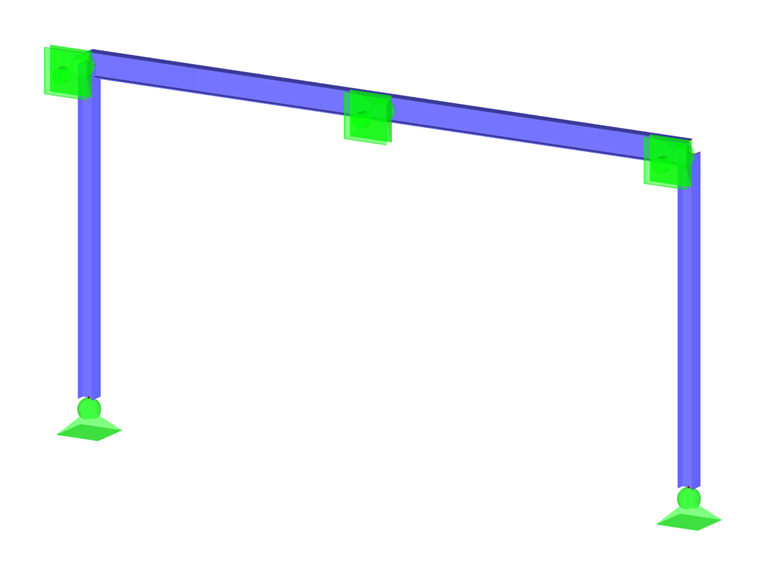The combination of actions should aim to find the most unfavorable load combination for the design for each location of the structure. Each additional load case with a changing effect increases the possible combinations and thus increases the number of load combinations to be analyzed.
Since the calculation effort increases with the number of load combinations, you always try to keep the amount of load combinations low. For example, you can reduce the number of load cases to be combined by using logical relationships in order to finally reduce the number of load combinations to be analyzed.
For example, a symmetrical two-hinged frame has the following principle load cases:
| Load case | Description | Acting | Axial Force Left Column | Axial Force Right Column |
|---|---|---|---|---|
| 1 | Dead load | Permanent | Compression | Compression |
| 2 | Wind to the right | Variable | Tension | Compression |
| 3 | Wind lifting | Variable | Tension | Tension |
| 4 | Snow | Variable | Compression | Compression |
Because LC1 is always acting and the other three load cases can occur variably, the following eight mathematically possible combinations result:
CO1 = LC1 + LC2 + LC3 + LC4
LC2 = LC1
LC3 = LC1 + LC2
CO4 = LC1 + LC3
LC5 = LC1 + LC4
CO6 = LC1 + LC2 + LC3
CO7 = LC1 + LC3 + LC4
CO8 = LC1 + LC2 + LC4
This selection can be reduced, for example, by simply searching for the extreme axial forces in the columns. For each column, you have to set up a group with load cases that act positively and negatively.
| Groups | Left Column | Right Column |
|---|---|---|
| Positive | LC1, LC2, LC3 | LC1, LC3 |
| Negative | LC1, LC4 | LC1, LC2, LC4 |
Now, you obtain only four instead of eight load combinations:
CO1 = LC1 + LC2 + LC3
LC2 = LC1 + LC4
LC3 = LC1 + LC3
CO4 = LC1 + LC2 + LC4
In RFEM 5 and RSTAB 8, you can implement this type of reduction in the "Edit Load Cases and Combinations" menu under the "Combination Rules" tab with the "Reduce number of load cases …" option.
To do this, activate the result criterion to be analyzed for a particular element selection in the "Reduce - Number of load cases" subtab for the maximum number of load cases in a load combination. The program then takes this information into account for the automatic determination of the required combinations.
Furthermore, you have the possibility to exclude the load cases of the groups using a relevance criterion. This additional option allows you to exclude load cases with lesser relevance.



